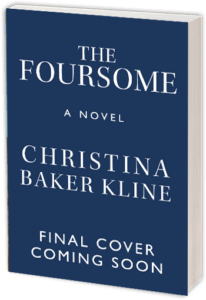Their Eyes were Watching God, by Zora Neale Hurston
This 1937 novel – a coming-of-age story about a young black girl in rural Florida in the early 20th century – was ahead of its time. It languished in obscurity for 30 years before being rediscovered by feminist and African American historians. I first read it in college; it’s been on my short shelf of favorites ever since. While writing A Piece of the World I returned to it again and again, finding particular inspiration in its imagery: “She pulled in her horizon like a great fish-net. Pulled it from around the waist of the world and draped it over her shoulder. So much of life in its meshes! She called in her soul to come and see.”
Wide Sargasso Sea, by Jean Rhys
This modern-day retelling of King Lear is about three sisters who inherit a family farm in Iowa from their brutal father. Long-buried secrets and resentments lead to tragedy. The bleak and yet hauntingly beautiful rural setting is as much a character in this novel as the three complex women who populate it. Re-reading A Thousand Acres reminded me of the importance of anchoring my story in a specific, minutely drawn place.
A Thousand Acres, by Jane Smiley
This modern-day retelling of King Lear is about three sisters who inherit a family farm in Iowa from their brutal father. Long-buried secrets and resentments lead to tragedy. The bleak and yet hauntingly beautiful rural setting is as much a character in this novel as the three complex women who populate it. Re-reading A Thousand Acres reminded me of the importance of anchoring my story in a specific, minutely drawn place.
Room, by Emma Donoghue
Speaking of place: nearly half of this stunning novel takes place in an 11-foot by 11-foot bunker. A woman who’s been kidnapped lives in it with her five-year-old son, a result of rape by her captor and the narrator of the story. When the boy manages to escape, the entire world as he knows it is transformed (and not just for the better). When I was writing A Piece of the World, I was particularly interested in how Donoghue wrote from a child’s perspective about confinement and how deftly she showed that any setting can be fertile ground for a child’s imagination and creativity.
Station Eleven, by Emily St. John Mandel
After a pandemic and the resulting collapse of civilization, a ragtag group of actors and musicians move from settlement to settlement, determined to keep the arts alive by performing. Emily St. John Mandel’s writing is infused with empathy; despite the sometimes brutal details of life after an apocalypse, the story reveals a generous vision of humanity. I found it a useful model for writing about people who seek joy where they can find it, however bleak their lives may seem from the outside.
